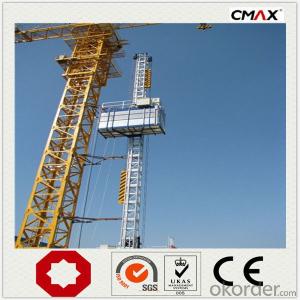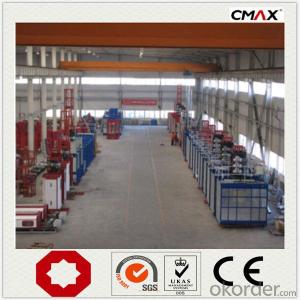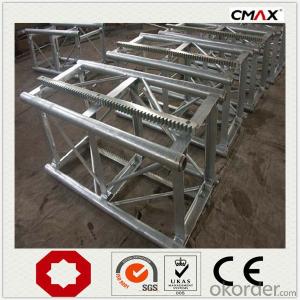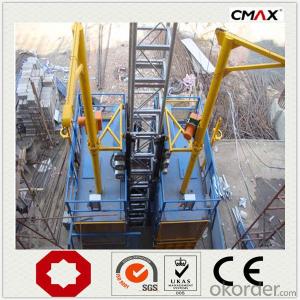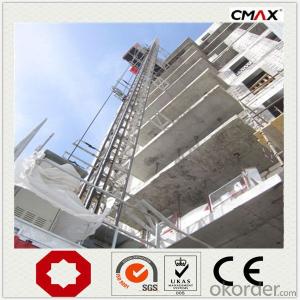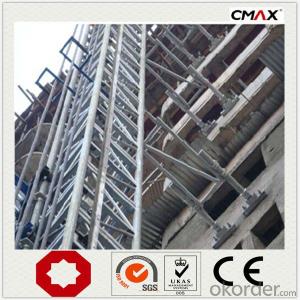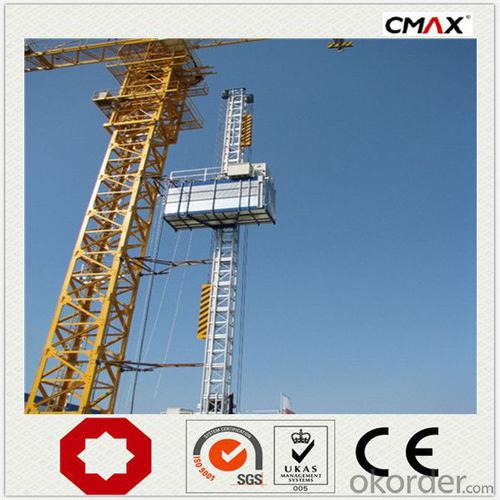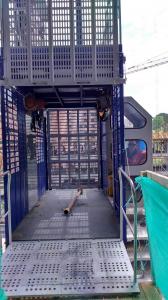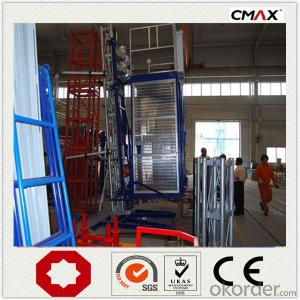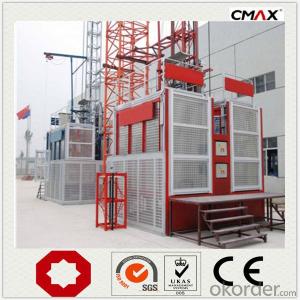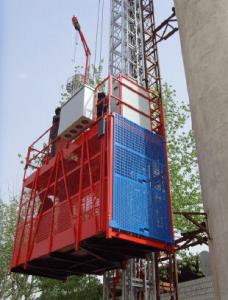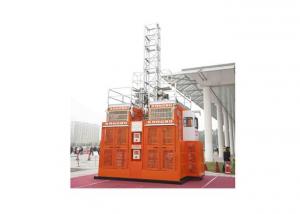Construction Hoist Material Handing Equipment
- Loading Port:
- China main port
- Payment Terms:
- TT OR LC
- Min Order Qty:
- 1 unit
- Supply Capability:
- 100 unit/month
OKorder Service Pledge
OKorder Financial Service
You Might Also Like
Structure of Construction Hoist Description
The general building hoist manufactured by our company have the features as good quality, long life, wide application range and convenient for maintenance. The gearing adopted bearing,enameled cable, and oil seal. The electric parts adopt products from worl renowned manufacturers such as Schneider, Siemes, and LG. The racks and pinion adopts specal material and heat-treatment technique, which prolong the life of these parts. The steel structure uses quality steel from famous domestic manufacturers. The surface of the structure can apply paint-spray, parkerizing baking finish or hot galvanizing processing according to users requirments. The cage can be produced and decorated by aluminum molded board, punched-plate or figured aluminum board.
Main Features of Construction Hoist
1. The recomended cage dimension(L*W*H)(m): 2.0*1.0*2.5, 2.5*1.0*2.5, 2.5*1.3*2.5, 3.0*1.5*2,5, 3.2*1.5*2.5, 3.8*1.5*2.5, 4.0*1.5*2.5, 4.2*1.5*2.5 etc. We can also manufacture cages of other size according to the user.
2. The cage and the door material can be aluminum molded board, punched-plate, figured aluminum board or other type according to yout requirements.
3. The mast section and the tie-in surface can adopt paint-spray, or hot galvanizing processing..
Construction Hoist Specifiction
SC series product also has special design, such as reinforced guide rail with cross-section of 800mm, inclined type, special for cooling tower, etc. All the double cage building hoist can be changed into single cage type,
| Type | Payload(kg) | Lifting Speed (m/min) | Motor Power(kw) | Safety Device | ||
| Twin Cage Hoist | No Counterweight | SC100/100 | 2*1000 | 33 | 2*2*11 | 2*SAJ30-1.2 |
| SC120/120 | 2*1200 | 33 | 2*2*11 | 2*SAJ30-1.2 | ||
| SC160/160 | 2*1600 | 33 | 2*2*11 | 2*SAJ30-1.2 | ||
| SC200/200 | 2*2000 | 33 | 2*3*11 | 2*SAJ40-1.2 | ||
| SC250/250 | 2*2500 | 33 | 2*3*11 | 2*SAJ50-1.2 | ||
| SC270/270 | 2*2700 | 33 | 2*3*15 | 2*SAJ50-1.2 | ||
| SC300/300 | 2*3000 | 33 | 2*3*15 | 2*SAJ50-1.2 | ||
| SC320/320 | 2*3200 | 33 | 2*3*15 | 2*SAJ50-1.2 | ||
| With Counterweight | SCD200/200 | 2*2000 | 33 | 2*2*11 | 2*SAJ40-1.2 | |
| SCD250/250 | 2*2500 | 33 | 2*2*11 | 2*SAJ50-1.2 | ||
| SCD270/270 | 2*2700 | 33 | 2*2*15 | 2*SAJ50-1.2 | ||
| SCD300/300 | 2*3000 | 33 | 2*2*15 | 2*SAJ50-1.2 | ||
| SCD320/320 | 2*3200 | 33 | 2*2*15 | 2*SAJ50-1.2 |
Images of Construction Hoist
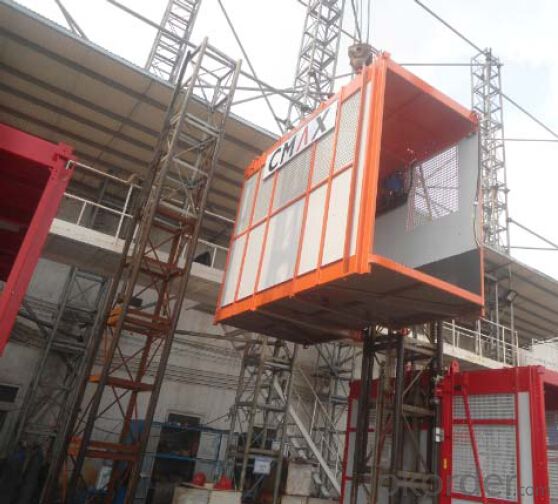
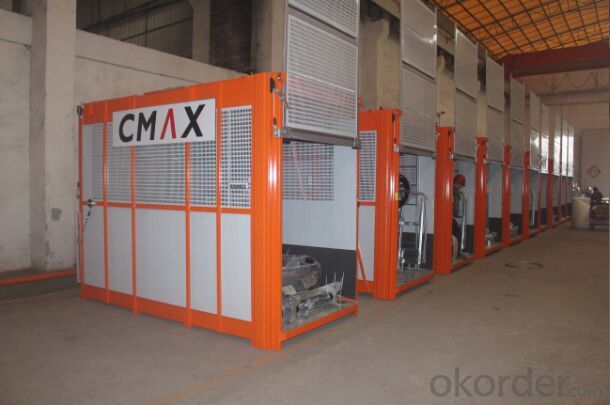
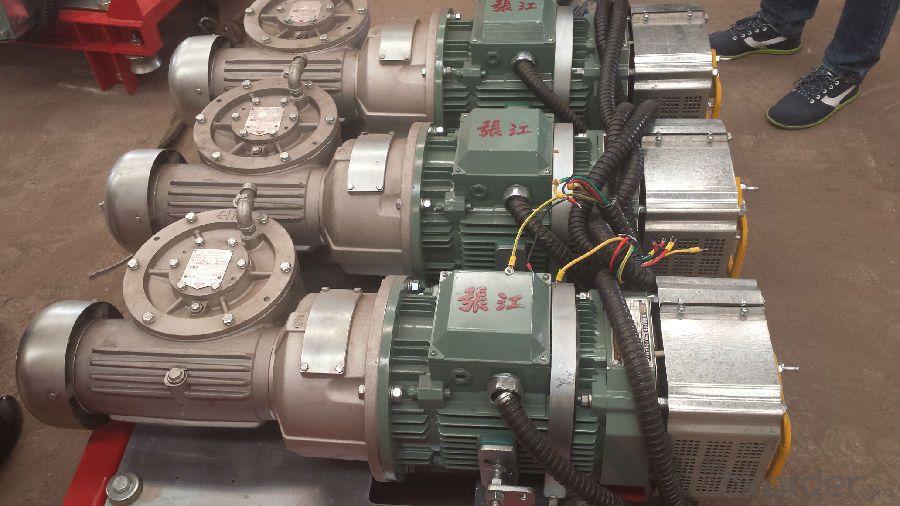
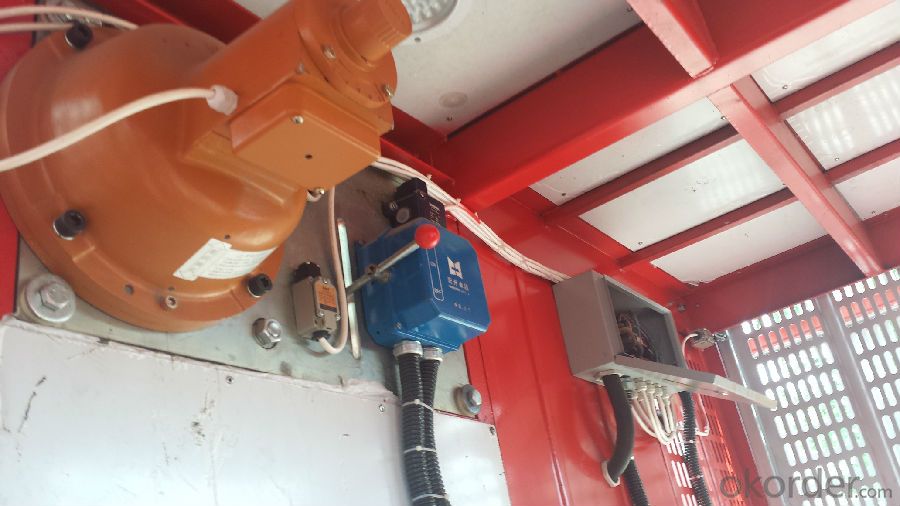
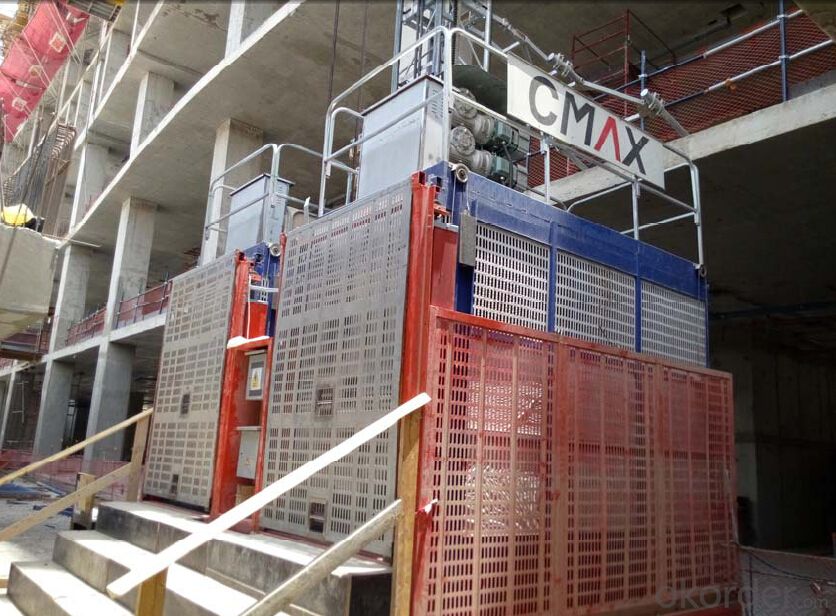
FAQ of Construction Hoist
Q: What is the building hoist main purpose?
A: Building hoist equipped with double or single cabin to transport the materials and labors up and down. It's the ideal
construction equipment for vertical transportation in the field of construction.
Q: What is the main structure of building hoist?
A: The P/M construction hoist mainly contains metal structure, driving system, electrical control system, cable guide & protection system, electrical top crane and safety device.
Q: What is the meaning of the building hoist’s code?
A: Take SC200/200 for example: “SC” stands for rack and pinion hoist, “200/200” stands for double cage and capacity is 2 tons per cage. “SC200” stands for single cage and capacity is 2 tons.
- Q: This question asks for the steps or methods to change the height at which a building hoist operates.
- <p>To adjust the height of a building hoist, follow these steps: Ensure the hoist is powered off and unplugged. Locate the height adjustment mechanism, which is typically a set of bolts or a telescoping system. Loosen any locking nuts or bolts to allow movement. Adjust the hoist height by raising or lowering the platform to the desired level. Once the correct height is reached, tighten the nuts or bolts to secure the hoist in place. Test the hoist to ensure it operates safely at the new height. Always refer to the manufacturer's instructions for specific details on your hoist model.</p>
- Q: This question asks for the method to determine the maximum weight that a building hoist can safely lift.
- <p>To calculate the lifting capacity of a building hoist, you need to consider several factors. First, identify the hoist's rated capacity, which is usually specified by the manufacturer. This is the maximum weight the hoist is designed to lift. Next, assess the condition of the hoist, including any wear and tear that might affect its performance. Check the hoist's mechanical components, such as cables, pulleys, and motors, to ensure they are in good working order. Additionally, consider the weight of the load you intend to lift and any additional factors like the frequency of lifts or the height of the lift. Always operate within the hoist's rated capacity and follow safety guidelines to prevent accidents.</p>
- Q: Is it possible to use a building hoist to lift multiple items simultaneously?
- <p>Yes, a building hoist can be used for lifting multiple objects at once, provided that the combined weight of the objects does not exceed the hoist's load capacity. It's important to ensure that the hoist is designed for such use and that safety precautions are strictly followed to prevent accidents. The objects should be secured properly to avoid any shifting during the lift, and the operation should be conducted by trained personnel to maintain safety standards.</p>
- Q: This question asks for the method to determine the maximum load that a single-rope lift can handle.
- <p>To calculate the load capacity of a single-rope lift, you need to consider several factors including the strength of the rope, the diameter of the rope, the angle of the lift, and the safety factor. The basic formula involves determining the maximum load the rope can bear based on its material properties and construction, which is then adjusted by the safety factor to account for dynamic loads and potential wear. The formula might look something like this: Load Capacity = (Tensile Strength of Rope 脳 Area of Rope Cross-Section 脳 Safety Factor) / (Cosine of Angle of Incline). It's important to consult with engineering standards and the lift manufacturer's specifications for precise calculations.</p>
- Q: Is it possible to use personal lifting equipment for lifting extremely heavy objects?
- <p>Using your own lifting equipment to lift very heavy objects can be possible, but it depends on the weight capacity and safety standards of your equipment. Always ensure that your lifting gear is rated for the weight you intend to lift and that it is in good working condition. Additionally, it's crucial to follow all safety protocols, including proper setup, securing the load, and using personal protective equipment. For extremely heavy objects, professional lifting services are often recommended to ensure safety and prevent accidents.</p>
- Q: How much cable does the construction elevator 44KVA need?
- 44 kva should choose 16 + 2 * 3 * 6 square cable, 16 of the 30 ℃ safe carrying capacity is 78 a cable Current I = P/U / 1.732 = 44000/380/1.732 is approximately 67A The construction elevator will not only carry the engineering materials but also the higher frequency, the load calculation will be calculated according to the continuous working system. The cable should be used for the YGTZ special cable.
- Q: The maximum allowable deviation of the vertical is the vertical degree when the construction elevator is installed
- The maximum allowable deviation for the installation of the elevator rail frame is the following: The height of the elevator rail is less than 70 meters, and the vertical deviation should not be greater than one thousandth of the height of the guide frame. 2, the guide frame height is greater than 70 meters is less than or equal to 100 meters, the deviation is less than or equal to 70 mm. 3, the guide frame is larger than 100 meters is less than 150 meters, the deviation is less than or equal to 90 mm. 4, the guide frame is larger than 150 meters is less than or equal to 200 meters. The deviation is less than or equal to 110 mm. The guide frame is greater than 200 meters and the deviation is less than 130 mm.
- Q: Is it possible to use two lifting devices simultaneously to lift an object that is heavier than the maximum weight each device can handle individually?
- <p>Yes, two lifting devices can be used together to lift a heavier object than either one can handle alone, provided that both devices are capable of supporting the combined weight and are properly synchronized. This requires careful planning and coordination to ensure the safety of the operation and the integrity of the lifting devices. The total weight capacity of the combined system should be greater than the weight of the object being lifted, and the devices must be designed to work in tandem without overloading or causing damage.</p>
- Q: Is it possible to use a building hoist to lift various types of materials?
- <p>Yes, a building hoist can be used for lifting different materials. It is designed to handle a wide range of loads, from construction materials like bricks and cement to heavy equipment. However, it is crucial to ensure that the materials being lifted are within the hoist's weight capacity and that they are properly secured to prevent accidents. Always follow the manufacturer's guidelines and safety regulations when using a building hoist to lift various materials.</p>
- Q: This question asks whether a building hoist can be used in both indoor and outdoor construction settings.
- <p>Yes, a building hoist can be used both indoors and outdoors for construction work. These hoists are versatile and designed to facilitate the movement of materials and personnel in multi-story buildings. Outdoors, they are often used during the construction of high-rise buildings, while indoors, they can be used for the vertical transportation of materials in large structures like shopping malls or office buildings. It's important to ensure that the hoist is suitable for the specific conditions, such as weather resistance for outdoor use, and that safety protocols are strictly followed to prevent accidents.</p>
Send your message to us
Construction Hoist Material Handing Equipment
- Loading Port:
- China main port
- Payment Terms:
- TT OR LC
- Min Order Qty:
- 1 unit
- Supply Capability:
- 100 unit/month
OKorder Service Pledge
OKorder Financial Service
Similar products
Hot products
Hot Searches
Related keywords
